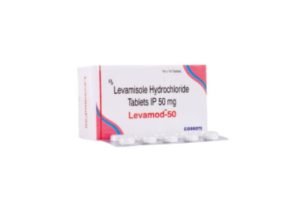
Sulfamoxole Description
Sulfamoxole is a sulfonamide-class antibiotic that inhibits bacterial growth by blocking the synthesis of folic acid, which is necessary for bacterial DNA synthesis. It is typically used in combination with Trimethoprim to treat various bacterial infections. This combination is bacteriostatic, meaning it inhibits the growth of bacteria rather than killing them directly.
Brand Names and Formulations
Sulfamoxole is rarely used alone and is typically found in combination with Trimethoprim as Cotrimoxazole. Common brand names include:
- Bactrim
- Septra
- Cotrim
- Resprim
The combination is available in different strengths, such as:
- Sulfamoxole 400 mg + Trimethoprim 80 mg (Regular strength)
- Sulfamoxole 800 mg + Trimethoprim 160 mg (Double strength, DS)
Uses/Indications
Sulfamoxole is primarily used in combination with Trimethoprim for:
- Urinary Tract Infections (UTIs): Effective against bacteria like Escherichia coli and Proteus.
- Respiratory Tract Infections: Such as bronchitis and pneumonia caused by susceptible organisms.
- Gastrointestinal Infections: Like shigellosis and traveler’s diarrhea.
- Pneumocystis jirovecii Pneumonia (PCP): Especially in immunocompromised patients, such as those with HIV/AIDS.
- Skin and Soft Tissue Infections: Such as cellulitis.
- Prophylaxis: Used in immunocompromised patients to prevent bacterial infections, including Pneumocystis jirovecii.
Dosage
The dose of Sulfamoxole is usually determined by the combined dose of Sulfamoxole and Trimethoprim, as it is administered together.
- For UTIs and Respiratory Infections (Adults):
- Regular Strength: 400 mg Sulfamoxole + 80 mg Trimethoprim, taken every 12 hours.
- Double Strength (DS): 800 mg Sulfamoxole + 160 mg Trimethoprim, taken every 12 hours.
- For Pneumocystis jirovecii Pneumonia (PCP):
- 75-100 mg/kg/day of Sulfamoxole + 15-20 mg/kg/day of Trimethoprim, divided into 3 or 4 doses, usually for 14-21 days.
- Prophylaxis in Immunocompromised Patients:
- 800 mg Sulfamoxole + 160 mg Trimethoprim once daily.
- Pediatric Use:
- Dose is weight-based, generally 40 mg/kg/day of Sulfamoxole and 8 mg/kg/day of Trimethoprim, divided into two doses.
Side Effects
Common side effects include:
- Gastrointestinal Effects: Nausea, vomiting, diarrhea, and loss of appetite.
- Hypersensitivity Reactions: Rash, fever, and in severe cases, Stevens-Johnson syndrome or toxic epidermal necrolysis (TEN).
- Hematologic Effects: Bone marrow suppression (leukopenia, thrombocytopenia, and megaloblastic anemia).
- Renal Effects: Crystalluria (crystal formation in urine), interstitial nephritis, and kidney stones.
- Liver Toxicity: Rare, but may cause liver function abnormalities and hepatitis.
- Hyperkalemia: Elevated potassium levels, especially when used with Trimethoprim.
- Photosensitivity: Increased risk of sunburn and skin irritation due to sunlight.
Contraindications
Sulfamoxole should not be used in:
- Allergy to sulfonamides or Trimethoprim.
- Pregnancy: Especially in the third trimester, due to the risk of kernicterus in the newborn.
- Neonates and Infants: Increased risk of kernicterus.
- Severe Renal or Liver Impairment: Without proper dose adjustment.
- G6PD Deficiency: May cause hemolytic anemia.
- Megaloblastic Anemia: Due to folate deficiency.
Drug Interactions
- Warfarin: Can increase the anticoagulant effect of warfarin, raising the risk of bleeding.
- Methotrexate: Increased risk of toxicity due to competition for renal excretion.
- Phenytoin: Prolongs phenytoin’s half-life, increasing the risk of toxicity.
- Oral Hypoglycemics (Sulfonylureas): May increase the hypoglycemic effect, increasing the risk of low blood sugar.
- ACE Inhibitors and ARBs: Increased risk of hyperkalemia, particularly in elderly patients.
- Ciclosporin: May reduce the effectiveness of ciclosporin, increasing the risk of transplant rejection.
Special Considerations
- Hydration: Adequate fluid intake is essential to prevent crystalluria and kidney stones.
- Folate Supplementation: In cases of prolonged use or in patients at risk of folate deficiency (e.g., malnourished or elderly), folic acid supplementation may be necessary.
- Renal and Hepatic Monitoring: Regular monitoring is essential in patients with renal or liver impairment to prevent drug accumulation and toxicity.
- G6PD Deficiency: Patients should be screened for G6PD deficiency, as they are at risk for hemolysis.
- Elderly Patients: Are at higher risk for hyperkalemia and renal toxicity and may require close monitoring of serum potassium and renal function.
Conclusion
Sulfamoxole, in combination with Trimethoprim, is an effective antibiotic for a wide range of bacterial infections, particularly urinary and respiratory infections, as well as in the treatment and prevention of Pneumocystis jirovecii pneumonia in immunocompromised patients. However, its use is limited by potential side effects, drug interactions, and increasing bacterial resistance. Adequate hydration, renal and hepatic monitoring, and consideration of patient-specific contraindications are essential to ensure safe and effective use of the drug.







